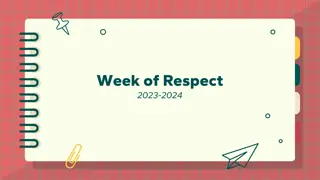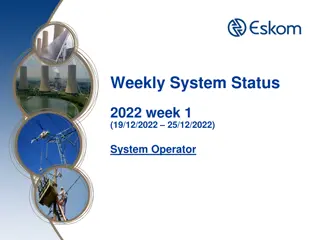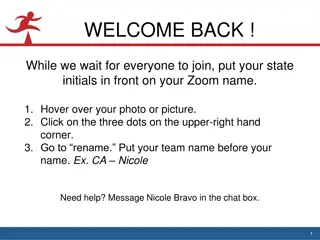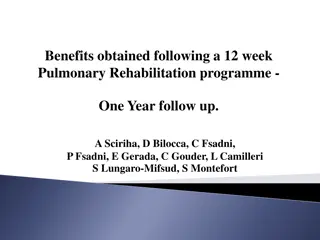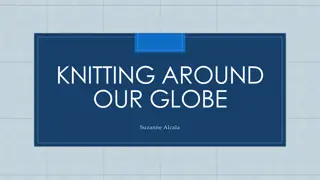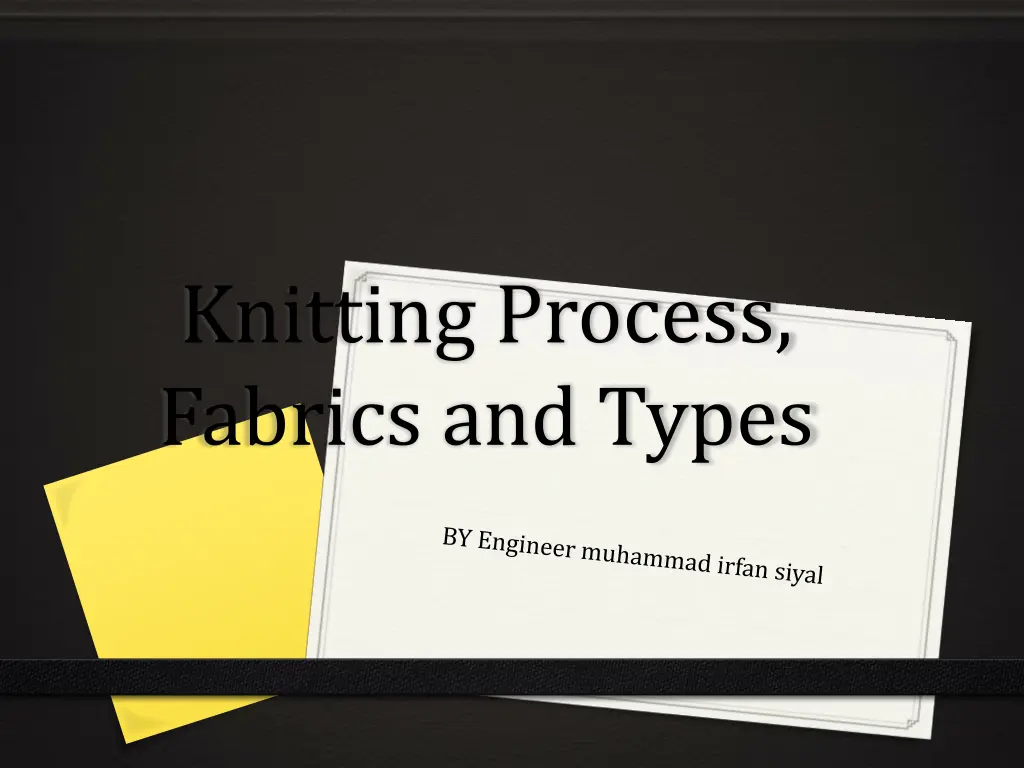
Understanding Knitted Fabric: Process, Types, and Construction
Explore the intricate world of knitted fabrics, including the process of interlocking loops, different types based on construction, and characteristic properties. Learn about weft and warp knits, fabric structures, and how loop arrangement impacts rigidity and stretch. Discover the art and science behind creating versatile and resilient knitted textiles.
Download Presentation

Please find below an Image/Link to download the presentation.
The content on the website is provided AS IS for your information and personal use only. It may not be sold, licensed, or shared on other websites without obtaining consent from the author. If you encounter any issues during the download, it is possible that the publisher has removed the file from their server.
You are allowed to download the files provided on this website for personal or commercial use, subject to the condition that they are used lawfully. All files are the property of their respective owners.
The content on the website is provided AS IS for your information and personal use only. It may not be sold, licensed, or shared on other websites without obtaining consent from the author.
E N D
Presentation Transcript
Knitting Process, Fabrics and Types
Basic Principle of Knitting 0 A knitted fabric may be made with a single yarn which is formed into interlocking loops with the help of hooked needles. 0 According to the purpose of the fabric, the loops may be loosely or closely constructed. 0 As the loops are interlocked in a knitted fabric, it can stretch in any direction even when a low-grade yarn having little elasticity is used.
Basic Construction Process of Knitted Fabric 0 The construction of knitted fabric is assessed by the number of stitches or loops per square inch. 0 When the interlocking loops run lengthwise, each row is called a wale that corresponds to the direction of warp in woven fabrics. 0 When the loops run across the fabric, each row is called a course that corresponds to the filling or weft in woven fabrics. 0 A knitted fabric having 50 loops or stitches in one inch of width and 60 loops in one inch of length will be said to have 50 wales and 60 courses.
Basic Construction Process of Knitted Fabric
Types of knitted Fabrics 0 There are various types of knitted fabrics and each type has different appearanceand characteristics. 0 The construction of a knitted fabric depends upon the type being constructed. 0 A knitted fabric that has more wales will be rigid and stable in width while a fabric that has more courses will be rigid and stable in length. 0 A fabric having many wales and courses per square inch will have better recovery from stretching than a fabric having lesser wales and courses.
Types of knitted Fabrics 0 Such fabric that will have fewer wales and courses will be less rigid, stretch more easily, fit to body shape in a better way but will have poorer recovery ability.
Types of knitted Fabrics 0 All the knitted fabrics are classified into two general categories: 0 Weft knit fabric, where one continuous yarn forms courses across the fabric. 0 Warp knit fabric, where a series of yarns form wales in the lengthwise direction of the fabric.
KNITTED FABRIC STRUCTUES 0There are two main industrial categories of machine knitting : warp knitting and weft knitting. Fabrics in both these categories consist essentially of a series of interlinked loops of yarn. Warp Knit Weft Knit 8
WARP KNITTING 0Warp knitting is the process of making a fabric by forming the loops in a vertical or warp-wise direction; the yarn is prepared as warp on beams with one or more yarns for each needle. 0The fabric has a flatter, closer, less elastic knit than weft knit and is very often run resistant. 9
WEFT KNITTING 0 Weft knitting is the most common type of knitting, it is the process of making a fabric by forming a series of connected loops in a horizontal or filling-wise direction; produced on both flat and circular knitting machines. 0Most of the sweaters, cardigans (Knitted Shirts), and other knitted outerwear are weft knitted fashioned garments, produced with a minimum of linking from shaped, generally flat garment pieces. 10
PRINCIPLE OF KNITTING 0 LOOP and STITCH The loop is the fundamental element of all knitted fabrics. 0 It is a basic unit consisting of a loop of yarn meshed at its base with previously formed basic units (stitches). 0 The stitch is the smallest dimensionally stable unit of all knitted fabrics. 0 It consists of a yarn loop, which is held together by being intermeshed with another stitch or other loops. 11
WALE AND COURSE 0The series of loops that intermesh in a vertical direction are known as 'Wale'. 0The loops that are inter-connected widthwise are known as 'Course'. traverse is equal to two courses.) (one 12
References 0 http://www.teonline.com/knowledge- centre/industrial-knitting-process.html 0Introduction to Textile Fabrics Knitting, By: Dr Jimmy Lam




